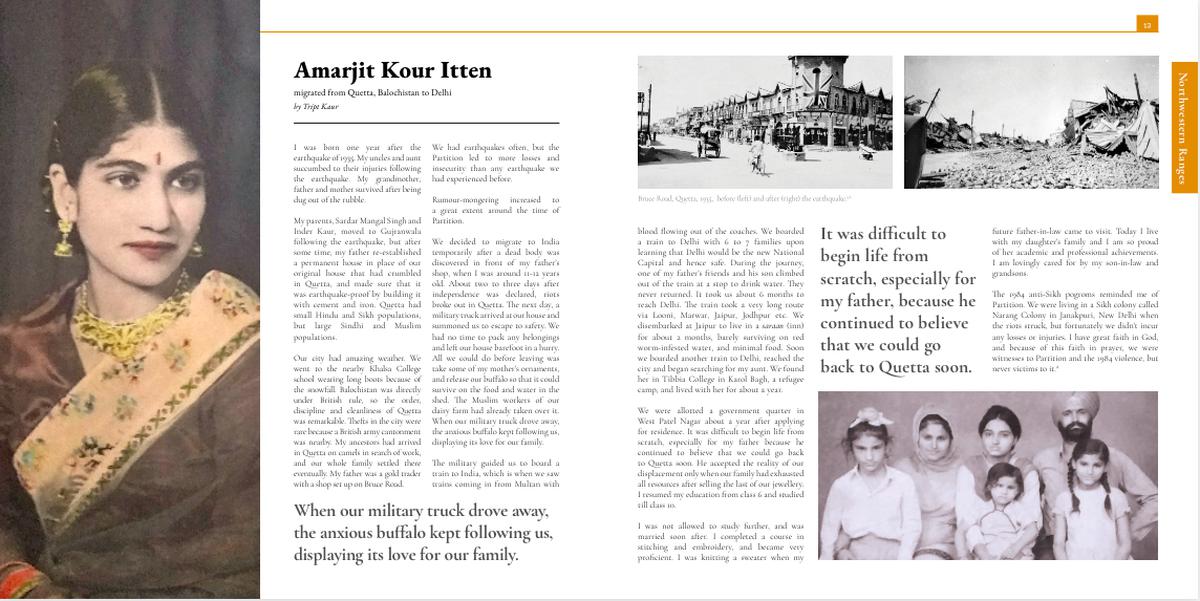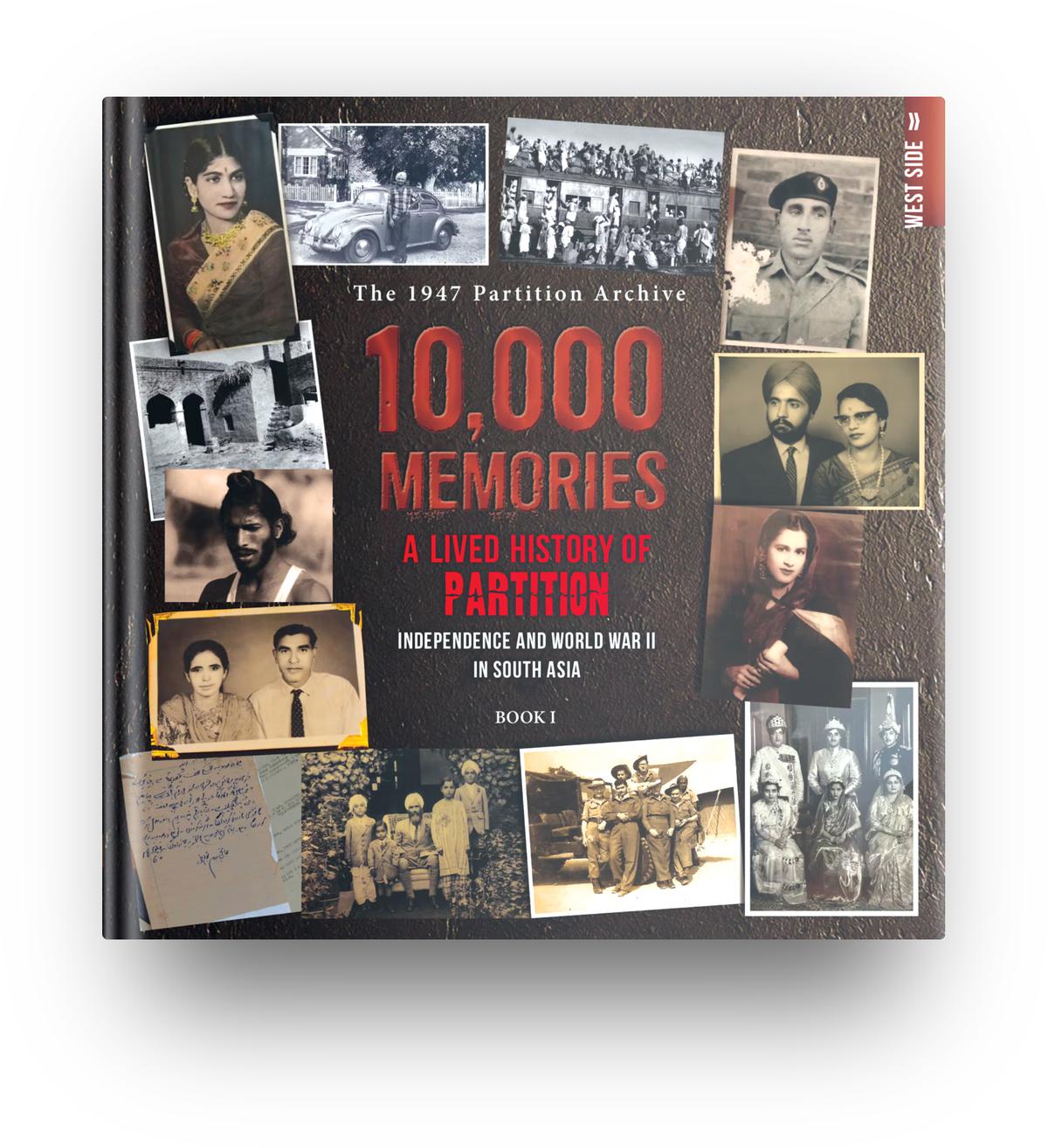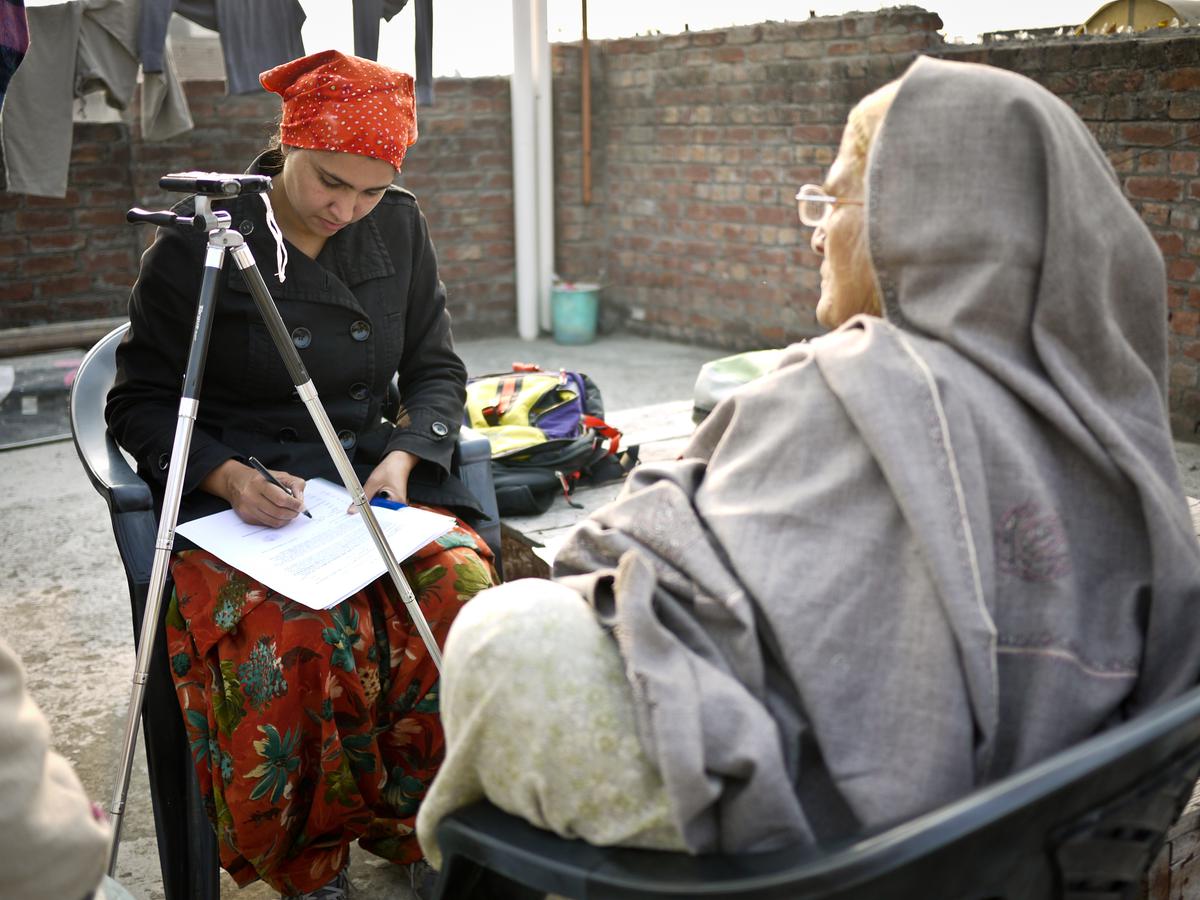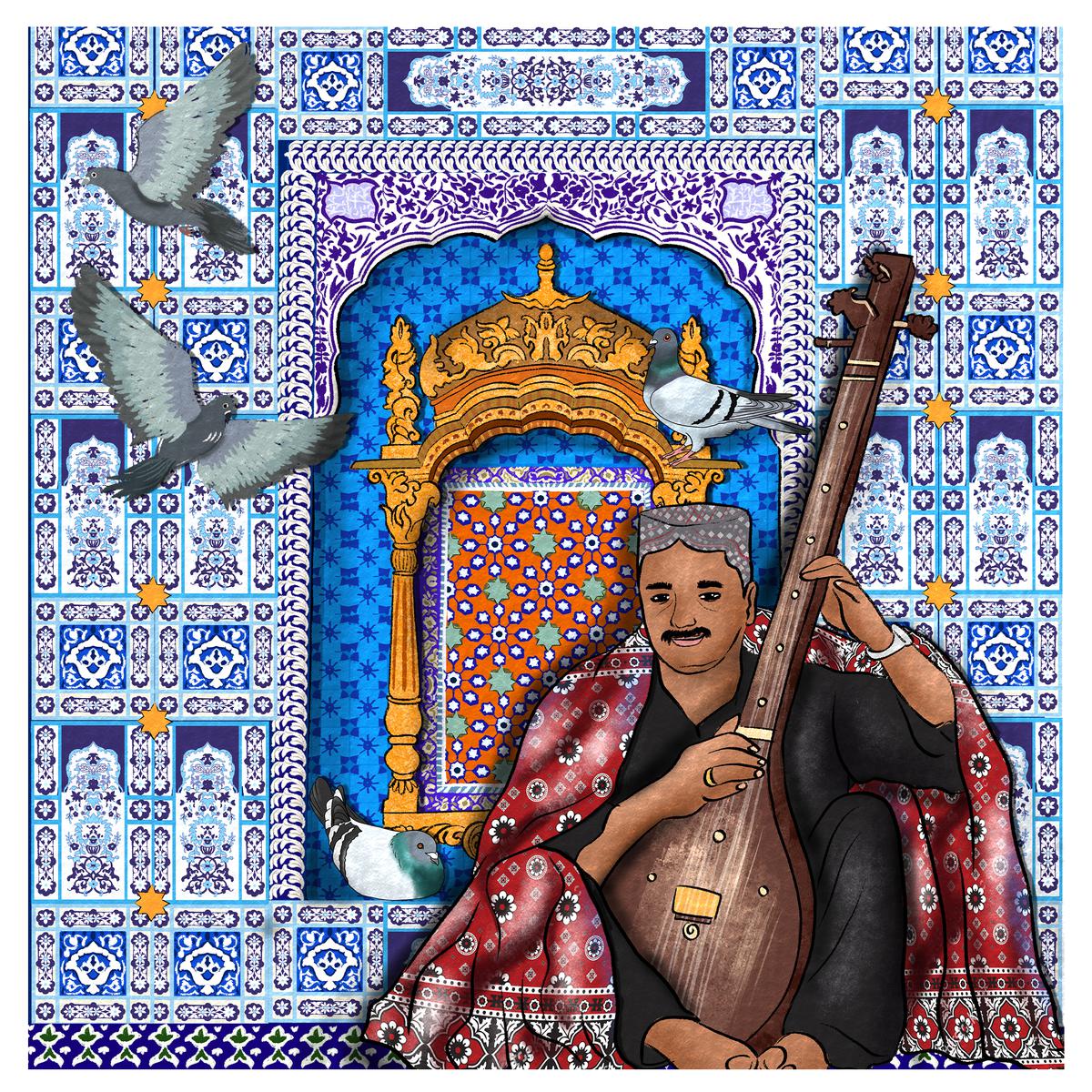An oral history recording is in progress. photo credit: special arrangement
Amarjeet Kaur Iten’s story is bookended by two photographs. In the first, she is a young woman in a Parsi gara sari, wearing a filigree necklace and earrings, calmly looking to the future. The second is a studio portrait in Delhi with her husband and children. Between the two, he has lived a life full of good and bad, bloodshed and peace. One thread that remained constant was his search for home. Born to a wealthy jeweler in Balochistan, Amarjeet had a happy childhood until the family left home for India before partition. A lasting memory of that time was the family buffalo that followed their truck as far as it could towards the border. By the time they reached Karol Bagh in Delhi via bloody trains via Multan and Jaipur, their sandals and souls had survived both the journey and doom. Amarjit raised his family in West Patel Nagar and then lost almost everything during the 1984 anti-Sikh riots.

Story of Amarjit Kaur Itten | photo credit: special arrangement
The story of Amarjit is one of the many stories that form the canon of the Partition Chronicles and is part of its first volume. 10,000 memories From 1947 Partition ArchiveA global non-profit founded in 2010.
The fragmentation of India forced the largest migration in history and even 75 years later, it is still spoken of as a time when things fell apart – home, relationships, identity. Partition greatly affected the spirit of India, Pakistan and Bangladesh and the people living through it. Refugees made their way across the Radcliffe Line carrying their scarce baggage, trauma, anger and nostalgia. Some built their lives with the strong optimism that became the hallmark of Partition survivors, while others waited for the liberation that never came.

book cover 10,000 Memories – The Living History of Partition
, photo credit: special arrangement
“Nearly 400 such lived experiences of the final years of the British in India, the effects of World War II, independence and partition took two years to compile in the first volume. When we finish we will have around 30 volumes,” says Gunita Singh Bhalla, founder of the collection, who left for the US last month after launching the book in cities across India. This month the book will be released across the US and UK.
Gunita, an Indian-American and post-doctoral fellow in physics from California, was inspired to chronicle these stories by her grandmother’s experience and a visit to the Hiroshima Oral Testimony Archives. “My grandmother escaped the 1947 Lahore pogrom. When she left, she took a piece of history with her. These are stories that had to be told and heard, and it had to be done quickly because many of these voices are fast fading away.

Gunita Singh Bhalla | Photo Credit: Marla Aufmuth
The collection began with citizen journalists, most of them in their early 20s, taking their cameras to villages and cities to record people in their 80s and 90s who went through these upheavals . Stories, photographs and video interviews came pouring in from India, Pakistan, Canada, Bangladesh, the US and the UK. The book was shaped by about 40 editors.
“The stories of the thousands of oldest people in the collection were first selected. Then we narrowed it down to regional, religious, ethnic, gender and class diversity. Photos were taken from families, archives, the British Museum… We gave voice to the victims and recorded the stories the way they wanted to tell, leaving the analysis to historians,” says Gunita.

Citizen journalist recording the story of Partition | photo credit: special arrangement
The book jacket, designed by Gunita and artist Ritu Topa, opens to Afghanistan in the west and Myanmar in the east. The stories which can be read front to back or back to back are placed under chapters like North-West, North-East and North-Central. Each chapter opens with a cover page that borrows from the art of the region – such as Ajrakh for Sindh and Madhubani for Delhi and the United Provinces. “The Bohra sisters – Sakina and Zainab Sabunwala – did the inside cover to bring out their art,” says Gunita.

Ajrakh inspired chapter cover for Sindh | Photo Credit: @Bohrasisters
Well-known names such as politician Subhashini Ali and author Margaret Defaults, who lend an Anglo-Indian perspective, also feature in the stories. Several decades later, neighbors, old friends, tormentors and victims all find themselves on the same page reminiscing about the kites they flew, the boys they loved and the despair they battled. .. No right or wrong story – just a library of feelings.
For details, www.10000memories.com